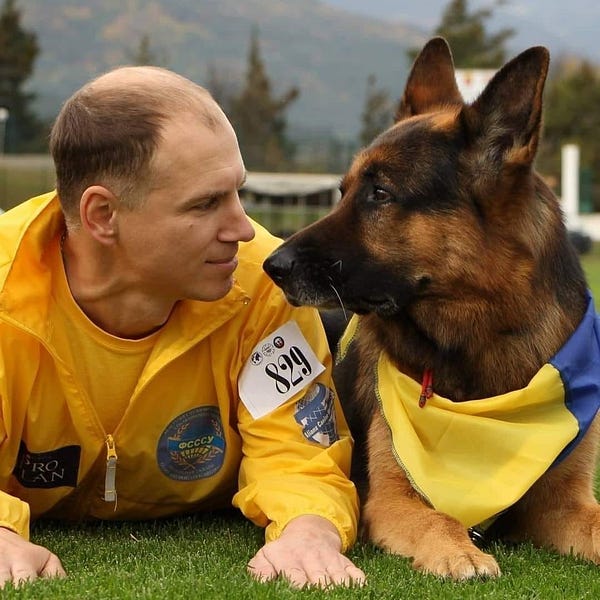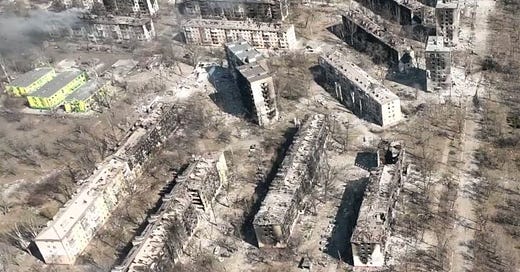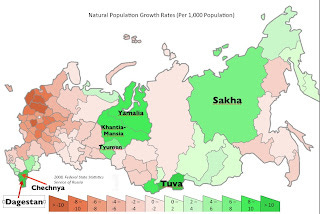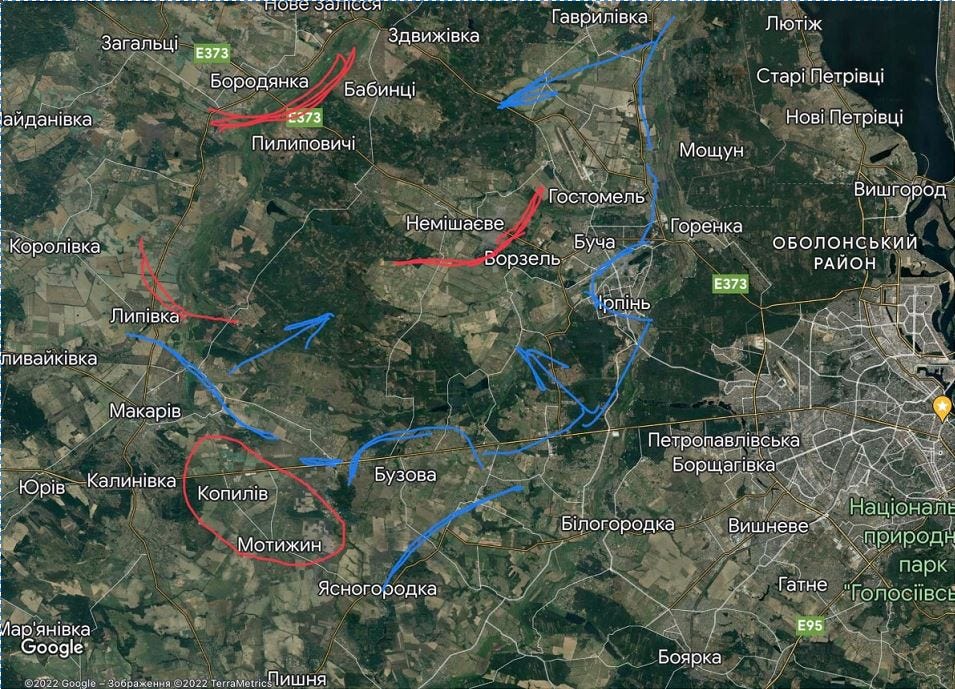Today we’ve opened a dedicated thread for discussion of NATO’s response to the war in Ukraine. We’d like to hear from you: What should NATO do? If you have comments, questions for any of our writers, insights, or arguments, please share them in the forum.
Ukraine
Mariupol. “Entire blocks of broken, burned houses, whose inhabitants died or were forced to flee the city. A month ago, Mariupol residents lived a peaceful life, worked, went to the cinema. And then the crazy cannibal decided to ‘save’ these people from Ukraine and brought death to their homes.”

Russia destroyed an art museum in Mariupol that housed 2,000 exhibits, including decorative and applied arts, graphics, sculpture, and original works by Ivan Aivazovsky, Mykola Hlushchenko, and Tatiana Yablonska.
Chernihiv rations drinking water as Russia accused of taking city hostage.
Full NKVD in its perversity:


Moscow deporting thousands of Ukrainian children to Russia. The US embassy in Kyiv says 2,389 children from Donetsk and Luhansk in the disputed Donbas region have been “illegally removed,” citing the Ukrainian foreign ministry. Earlier this week, officials in Mariupol said that Russian forces had kidnapped and deported by force thousands of Ukrainians to Russia.

Biden’s visit
Joe Biden is coming to Europe today. He’ll take part in an emergency NATO summit, G7 summit, and European Council meeting.
Putin made an unexpected announcement yesterday that EU countries will have to pay for natural gas shipments in rubles. He also throttled the Caspian pipeline for no reason but to raise the price of gas, which worked—it sent the price of oil skyrocketing. The point of this, clearly, is to undermine a coherent Western response, and already the Germans are going wobbly. Chancellor Olaf Scholz warned yesterday that ending Europe’s dependence on Russian energy too quickly would plunge Europe into recession and risk hundreds of thousands of jobs and entire industrial sectors.
Vladislav Davidzon responds:

Ukrainian Foreign Minister Dmytro Kuleba: “If any EU country bows to Putin’s humiliating demands to pay for oil and gas in rubles, it will be like helping Ukraine with one hand and helping Russians kill Ukrainians with the other. I urge relevant countries to make a wise and responsible choice.”
Boris Johnson: Putin has already “crossed a red line” that merits ramping up the west’s response. He says allies must send new weapons to Ukraine, expand curbs on international payments, and target Russia’s gold reserves. Last night, he said the UK would double the number of British missiles sent to Ukraine.


UPDATE: Biden and Europeans to announce major plan to redirect gas to Europe.
Russia has also taken the world’s food supply hostage:


NATO news
As allies meet, splits emerge in NATO about how to deter Russia:
Allied leaders are discussing whether it is best to keep Russia guessing about what will trigger a bigger military response or to outline precisely what would draw NATO into a conflict.
Some NATO policymakers in Europe worry that there has been too much public messaging about what the alliance won’t do—send its troops into Ukraine, nor, for the moment, send fighter jets for which Kyiv has been campaigning. With the threat of Russian nuclear and chemical weapons looming over the battlefields of Ukraine, a better approach, they say, would be not to rule out anything publicly.
(Count me on the side of those who say there has been far too much public messaging about what the alliance won’t do—Claire.)
Critics of the US handling of deterrence say that by being so clear about what the United States won’t do for Ukraine, Washington is potentially emboldening Russian President Vladimir Putin to act more aggressively than he otherwise would.
“I don’t think this is very productive when we say every so often, ‘We don’t want World War 3,’ or ‘We don’t want conflict with Russia,’” said Marko Mihkelson, the head of the foreign affairs committee of the Estonian parliament, who was in Washington last week to lobby for additional troops and equipment for NATO’s eastern flank. “That’s a green light to the Russians that we’re afraid of them.”
Listen to the Estonians—Claire.
NATO has announced it will provide Ukraine with defenses against chemical and nuclear weapons. It declined to spell out exactly what these might be. Journalists are speculating that gas masks and protective suits might be involved.
Poland expels 45 Russian spies “pretending to be diplomats.”
With war next door, Finland, Sweden train with NATO. For the first time, majorities in both countries support joining NATO.
NATO warns Russia that a nuclear war “cannot be won.”
NATO will double its number of deployed battlegroups, sending them to Hungary, Romania, Bulgaria, and Slovakia. Stoltenberg says he expects further announcements tomorrow reinforcing the alliance’s eastern flank.
I don’t much like the terrified look in Stoltenberg’s eyes.
Sweden will send another 5,000 anti-tank weapons to Ukraine.
Germany says more Strela missiles are en route.
By François Heisbourg: What if Putin attacks NATO next?
The basic assumption within NATO is that Russian President Vladimir Putin won’t dare to directly strike at the alliance. Article 5 of the North Atlantic Treaty—which holds that any attack on a NATO member country is to be considered an attack on all its members—has come to be seen as an unchallengeable defense guarantee that Russia will not seek to put to the test.
The question now, after Russia’s attack on Ukraine, is: Just how much does Putin share this totemic vision of Article 5? The answer—we just don’t know—is worrying enough to warrant a rethinking of NATO’s military and political stance. …
… There is a strong chance that President Putin will seek to further test NATO’s determination after the Ukrainian campaign. The obvious places for him to begin are in the non-NATO but close-to-NATO countries — notably Sweden and its strategic real estate in the Baltic Sea, such as the island of Gotland.
Cyberattacks
From a reader:
Today I went to the TrenItalia website to buy a ticket to Munich to visit my oncologist. I went through all the selection steps, but when I got to the end, there was a message that those two trains were not available on those dates. Not full at that price, or any price, but not available. So I went to Deutsche Bahn’s website and bought tickets, no problem. Then it turns out that TrenItalia has suffered a massive hack attack. No tickets available from the offices in Italian stations, or from the ticket-vending machines. The notice boards are not working properly. The only way to take a train, if you find one that’s going where you want to go, is just get on board and pay the conductor. Total chaos. So, we can expect the attacks on European internet structure, which handles almost everything except breathing in and breathing out, to stay under siege going forward indefinitely.
A mysterious cyberattack against the satellite’s ground infrastructure—not the satellite itself—plunged tens of thousands of people into internet darkness. Among them were parts of Ukraine’s defenses.
Almost a month after the attack, the disruptions continue. Thousands still remain offline in Europe—around 2,000 wind turbines are still disconnected in Germany—and companies are racing to replace broken modems or fix connections with updates. Multiple intelligence agencies, including those in the US and Europe, are also investigating the attack. The Viasat hack is arguably the largest publicly known cyberattack to take place since Russia invaded Ukraine, and it stands out for its impact beyond Ukraine’s borders. But questions about the details of the attack, its purpose, and who carried it out remain—although experts have their suspicions.
The three Russian cyber-attacks the West most fears.
White House warns Russia is preparing cyber attacks against US. The White House has issued its strongest warning yet: intelligence indicates “preparatory activity.”
Threat looms of Russian attack on undersea cables to shut down West’s Internet.
Russia
Russian forces continued to settle in for a protracted and stalemated conflict over the last 24 hours, with more reports emerging of Russian troops digging in and laying mines—indications that they have gone over to the defensive. Ukrainian forces continued to conduct limited and effective counterattacks to relieve pressure on Kyiv, although the extent of those counterattacks is likely less than what some Ukrainian officials are claiming. Russian efforts to mobilize additional forces to keep their offensive moving continue to be halting and limited. Russian progress in taking Mariupol city remains slow and grinding. Increasing Russian emphasis on using air, artillery, and rocket/missile bombardments of Ukrainian cities to offset forward offensive momentum raises the urgency of providing Ukraine with systems to defend against these attacks.
Military supplies depleted on both sides but Russia retains advantage.
Russian MP Alexander Nezorov’s astonishingly accurate—and very funny—prediction of how war in Ukraine would would unfold:
The minority factor
Kamil Galeev writes, in a well-informed thread,
The minority factor in Russian army is vastly underrated when discussing the course of Ukrainian war. Judging from the casualty lists, Russian ethnic minorities are wildly overrepresented on the battlefields as the cannon fodder.
We don’t have aggregated data for the entire Russian army. But we can get some idea of who fights in Ukraine from this list of wounded Russian soldiers lying in Rostov hospital. More than half are clearly Dagestani. Magomed (Muhammad)—the most common name in the list of wounded. …
It makes total sense. … almost all Russian regions with high fertility are either ethnic republics or ethnic autonomous okrugs. Caucasians and Siberian natives reproduce, providing a lot of draftable males. Plus they are mostly poor so can be easily lured into the army …
My recommendations to encourage defection and sabotage should be considered in this context. Very soon Russian army will be filled by a number of people who don’t share Russian imperial mythos and got there absolutely accidentally. Their motivation will be very, very low.
The same was true in WWII. These cases were not published to maintain the illusion about the ‘unity of Soviet people,’ but in fact morale of Central Asian troops was very low and they were defecting to Germans en masse, much more than Russians. They didn’t see it as their war.
My Turkish friends have been noticing this for weeks: The ratio of ethnic Russians to minorities in Ukraine is extremely high.


Russian government official Anatoly Chubais, Putin’s climate envoy, has stepped down and left the country. He’s the highest-level official to break with the Kremlin over the invasion. He’s also one of Russia’s most hated politicians—the architect of the botched privatization that produced today’s corrupt Russian oligarchs. But he’s famous for knowing where wind is blowing. I wonder where he’s gone?


Where’s Shoigu? Russia’s defense minister, Sergei Shoigu, hasn’t been seen in twelve days. “Heart problems,” they say. It wouldn’t even surprise me if that were true. Shoigu did not look like a man in good health last I looked at him. His skin had that greyish tone that says “heart attack imminent.” The strain of this could have legitimately done him in. Of course, it’s just as likely he drank tea too close to a window.


Putin has coup-proofed his regime, argues Adam Casey. “[I]t’s tempting to imagine a swift, decisive end via Putin’s removal,” he writes,
But this might be as mistaken as Putin’s own hopes of a decapitation strike in Ukraine were. Putin, the product of a ruthless security system himself, has been preparing for the risks posed by a palace or military coup since he came into power in 1999. The Russian coercive apparatus has multiple mechanisms to prevent a coup. If Putin is to fall from power, it is likely to come from elite defection rather than a premeditated coup.
NATO says as many as 40,000 Russian troops have been killed, wounded, taken prisoner, or gone missing in Ukraine. Update: According to the Ukrainian Armed Forces’ latest report, the number of incapacitated Russia troops could be as high as 65,000. Obviously, they have an interest in inflating these numbers, but NATO’s estimates have tended to follow theirs. Russia entered Ukraine with some 190,000 troops. Casualties are probably highest among combat troops than among troops providing support and logistics. If 120,000 of those troops were serving in a combat role, than NATO’s lower estimate would mean a third of the pointy end of the spear has been neutralized. If Ukraine’s higher estimate is correct, then half of Russia’s combat force could be wiped out. It would also mean the remaining troops would have a very hard time functioning.
At what point do armies tend to break?
Major Alexey Osokin, the commander of the VDV’s 31st Air Assault Brigade’s 1st battalion, has reportedly been killed, too.
The Orsk, an alligator-class Russian landing ship, has according to a number of reports been destroyed in Berdyansk.
Ukraine’s security services released a soldier’s intercepted phone call. He says Russian losses caused a soldier to drive over his colonel with a tank. He also tells his friends Ukrainian forces “tore apart” a column of Russian forces sent along with his own unit. He describes complete disarray among the Russian military, and says fifty percent of the unit has frostbite. “Basically, it’s a shitshow,” he says. He otherwise sounds calm.
A grain of salt, yes, but it’s probably real: Russia’s encrypted military phones aren’t working—the problem is so acute they’ve resorted to stealing phones from Ukrainians.
Igor the racecar driver is still publishing the allegedly leaked FSB letters. I don’t believe them anymore—they’ve lost their tantalizing initial aspect of verisimilitude—but they remain compulsively readable.
From the head of the Belarusian government in exile:

This story is unbearable. It happened on March 2, but I hadn’t seen the news. There is apparently a video of the attack, and the story is apparently even worse than this, but I will not watch it.


Nuclear weapons

(Don’t forget to visit our Translation Superhighway to read more from the Russian media—Claire.)
Ivo Daldar: Like 1939, but with nuclear weapons.
Glasgow oblivious as unmarked military convoy carrying “up to six” nuclear warheads passes through city. “The convoy was tracked by nuclear campaigners as it made its way up the M74 and onto the M8 just a mile or so south of Glasgow city centre on its way to Royal Naval Armaments Depot Coulport on Loch Long.” Nukewatch, who spotted the convoy, says however that this is “routine.”
Three out of four French submarine nuclear launchers are at sea, which hasn’t happened since the 1980s. François Heibourg says this is not routine: “This is meant to be noticed. Note: French authorities don’t comment on nuclear alerts.”
France also announced the successful test of the newest version of its nuclear-
Tell us what you think about NATO’s response to this horror, here. Or ask questions. We’d like to hear from you. To participate, please subscribe.
And please subscribe to read the rest: We need to pay the people who write for us. They’re working very hard.
Keep reading with a 7-day free trial
Subscribe to The Cosmopolitan Globalist to keep reading this post and get 7 days of free access to the full post archives.







